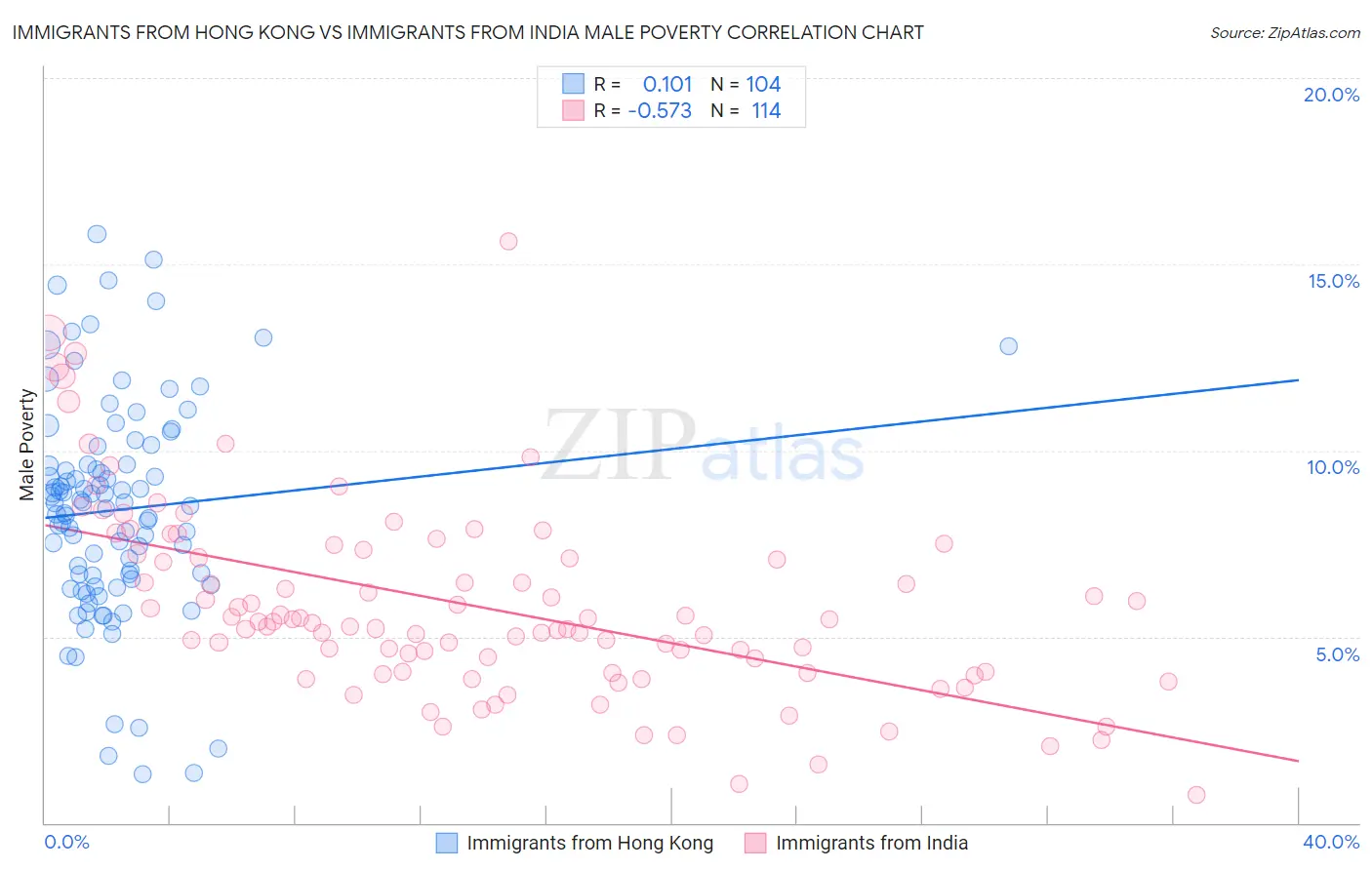Immigrants from Hong Kong vs Immigrants from India Male Poverty
COMPARE
Immigrants from Hong Kong
Immigrants from India
Male Poverty
Male Poverty Comparison
Immigrants from Hong Kong
Immigrants from India
9.6%
MALE POVERTY
99.7/ 100
METRIC RATING
19th/ 347
METRIC RANK
8.2%
MALE POVERTY
100.0/ 100
METRIC RATING
1st/ 347
METRIC RANK
Immigrants from Hong Kong vs Immigrants from India Male Poverty Correlation Chart
The statistical analysis conducted on geographies consisting of 253,850,467 people shows a poor positive correlation between the proportion of Immigrants from Hong Kong and poverty level among males in the United States with a correlation coefficient (R) of 0.101 and weighted average of 9.6%. Similarly, the statistical analysis conducted on geographies consisting of 433,533,379 people shows a substantial negative correlation between the proportion of Immigrants from India and poverty level among males in the United States with a correlation coefficient (R) of -0.573 and weighted average of 8.2%, a difference of 16.9%.

Male Poverty Correlation Summary
| Measurement | Immigrants from Hong Kong | Immigrants from India |
| Minimum | 1.3% | 0.74% |
| Maximum | 15.8% | 15.6% |
| Range | 14.5% | 14.9% |
| Mean | 8.4% | 5.8% |
| Median | 8.6% | 5.4% |
| Interquartile 25% (IQ1) | 6.6% | 4.1% |
| Interquartile 75% (IQ3) | 9.6% | 7.2% |
| Interquartile Range (IQR) | 3.0% | 3.2% |
| Standard Deviation (Sample) | 2.9% | 2.6% |
| Standard Deviation (Population) | 2.9% | 2.6% |
Demographics Similar to Immigrants from Hong Kong and Immigrants from India by Male Poverty
In terms of male poverty, the demographic groups most similar to Immigrants from Hong Kong are Latvian (9.6%, a difference of 0.10%), Lithuanian (9.5%, a difference of 0.18%), Norwegian (9.5%, a difference of 0.35%), Luxembourger (9.5%, a difference of 0.48%), and Bhutanese (9.5%, a difference of 1.0%). Similarly, the demographic groups most similar to Immigrants from India are Chinese (8.7%, a difference of 6.2%), Thai (8.7%, a difference of 6.2%), Immigrants from Taiwan (8.9%, a difference of 8.7%), Maltese (9.1%, a difference of 10.9%), and Assyrian/Chaldean/Syriac (9.1%, a difference of 11.6%).
| Demographics | Rating | Rank | Male Poverty |
| Immigrants | India | 100.0 /100 | #1 | Exceptional 8.2% |
| Chinese | 100.0 /100 | #2 | Exceptional 8.7% |
| Thais | 100.0 /100 | #3 | Exceptional 8.7% |
| Immigrants | Taiwan | 100.0 /100 | #4 | Exceptional 8.9% |
| Maltese | 100.0 /100 | #5 | Exceptional 9.1% |
| Assyrians/Chaldeans/Syriacs | 99.9 /100 | #6 | Exceptional 9.1% |
| Immigrants | Ireland | 99.9 /100 | #7 | Exceptional 9.1% |
| Filipinos | 99.9 /100 | #8 | Exceptional 9.2% |
| Immigrants | South Central Asia | 99.9 /100 | #9 | Exceptional 9.3% |
| Bulgarians | 99.9 /100 | #10 | Exceptional 9.3% |
| Bolivians | 99.9 /100 | #11 | Exceptional 9.4% |
| Immigrants | Bolivia | 99.9 /100 | #12 | Exceptional 9.4% |
| Immigrants | Lithuania | 99.9 /100 | #13 | Exceptional 9.4% |
| Immigrants | North Macedonia | 99.8 /100 | #14 | Exceptional 9.4% |
| Bhutanese | 99.8 /100 | #15 | Exceptional 9.5% |
| Luxembourgers | 99.8 /100 | #16 | Exceptional 9.5% |
| Norwegians | 99.8 /100 | #17 | Exceptional 9.5% |
| Lithuanians | 99.8 /100 | #18 | Exceptional 9.5% |
| Immigrants | Hong Kong | 99.7 /100 | #19 | Exceptional 9.6% |
| Latvians | 99.7 /100 | #20 | Exceptional 9.6% |